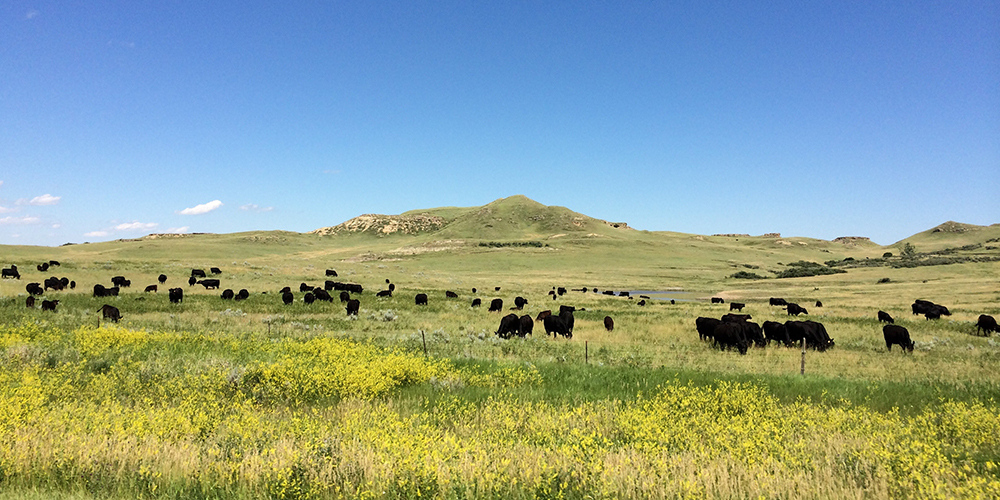Equip Your Business: Bagley Risk Management Insights
Recognizing Livestock Risk Protection (LRP) Insurance Policy: A Comprehensive Guide
Navigating the realm of livestock danger security (LRP) insurance policy can be a complicated venture for several in the farming sector. This kind of insurance offers a safeguard versus market changes and unanticipated situations that could affect animals manufacturers. By recognizing the details of LRP insurance, producers can make informed decisions that might secure their procedures from economic threats. From how LRP insurance operates to the various insurance coverage alternatives readily available, there is much to reveal in this comprehensive overview that could potentially shape the means livestock manufacturers come close to danger management in their companies.

How LRP Insurance Works
Sometimes, comprehending the technicians of Livestock Risk Defense (LRP) insurance coverage can be intricate, yet damaging down exactly how it functions can offer clarity for breeders and farmers. LRP insurance policy is a danger monitoring tool created to shield animals producers against unanticipated rate decreases. The plan permits producers to establish a coverage degree based on their particular demands, picking the number of head, weight array, and protection rate. As soon as the plan is in area, if market value drop below the protection cost, manufacturers can sue for the distinction. It is essential to keep in mind that LRP insurance is not a profits guarantee; rather, it concentrates entirely on rate danger security. The insurance coverage duration usually varies from 13 to 52 weeks, supplying adaptability for manufacturers to choose a duration that straightens with their manufacturing cycle. By utilizing LRP insurance policy, farmers and herdsmans can minimize the economic risks associated with rising and fall market value, ensuring greater stability in their procedures.
Eligibility and Protection Options

When it comes to coverage choices, LRP insurance supplies manufacturers the flexibility to choose the protection level, coverage duration, and recommendations that ideal suit their danger management requirements. Protection levels usually vary from 70% to 100% of the anticipated ending value of the insured livestock. Manufacturers can additionally choose protection durations that line up with their production cycle, whether they are insuring feeder cattle, fed cattle, swine, or lamb. Recommendations such as cost risk protection can better personalize insurance coverage to secure versus negative market fluctuations. By understanding the qualification criteria and protection options available, livestock producers can make enlightened choices to manage danger effectively.
Benefits And Drawbacks of LRP Insurance
When evaluating Animals Threat Defense (LRP) insurance coverage, it is vital for animals producers to evaluate the benefits and disadvantages integral in this risk administration device.

One of the primary benefits of LRP insurance policy is its capacity to offer security against a decline in animals rates. In addition, LRP insurance coverage provides a degree of flexibility, allowing manufacturers to personalize insurance coverage degrees and plan durations to match their specific demands.
Nevertheless, there are additionally some disadvantages to take into consideration. One constraint of LRP insurance policy is that it does not shield versus all types of risks, such as disease episodes or all-natural calamities. Costs can often be pricey, specifically for manufacturers with huge livestock herds. It is crucial for manufacturers to very carefully assess their specific risk direct exposure and financial circumstance to establish if LRP insurance coverage is the appropriate risk administration device for their operation.
Comprehending LRP Insurance Policy Premiums

Tips for Making Best Use Of LRP Conveniences
Taking full advantage of the advantages of Livestock Risk Protection (LRP) insurance policy requires strategic planning and aggressive threat monitoring - Bagley Risk Management. To maximize your LRP coverage, consider the following ideas:
Routinely Analyze Market Problems: Keep informed regarding market trends and cost variations in the livestock industry. By checking these factors, you can make enlightened choices regarding when to buy LRP protection to secure versus possible losses.
Set Realistic Coverage Degrees: When selecting insurance coverage levels, consider your production prices, market worth of animals, and possible dangers - Bagley Risk Management. Setting reasonable insurance coverage degrees makes certain that you are properly secured without overpaying for unneeded insurance
Diversify Your Protection: Rather than depending solely on LRP insurance coverage, take into consideration expanding your danger management methods. Integrating LRP with other threat monitoring tools such as futures agreements or alternatives can supply extensive coverage versus market unpredictabilities.
Review and Readjust Protection Frequently: As market problems transform, periodically Learn More Here assess your LRP coverage to guarantee it straightens with your existing threat direct exposure. Readjusting coverage degrees and timing of acquisitions can help maximize your danger defense approach. By following these ideas, you can optimize the advantages of LRP insurance policy and protect your livestock procedure against unexpected dangers.
Final Thought
In final thought, livestock danger defense (LRP) insurance is a valuable tool for farmers to handle the economic dangers associated with their livestock procedures. By understanding how LRP works, qualification and insurance coverage choices, in addition to the advantages and disadvantages of this insurance coverage, farmers can make enlightened choices to protect their resources. By carefully thinking about LRP premiums and implementing approaches to take full advantage of benefits, farmers can reduce possible losses and make sure the sustainability of their procedures.
Animals producers interested in obtaining Animals Threat Defense (LRP) insurance coverage can discover a variety of eligibility standards and protection alternatives tailored to their specific animals procedures.When it comes to insurance coverage options, LRP insurance coverage supplies manufacturers the flexibility to pick the coverage level, coverage period, and endorsements that best match their threat administration demands.To realize the intricacies of Animals Threat Protection (LRP) insurance completely, comprehending the factors influencing LRP insurance coverage premiums is important. LRP insurance premiums are figured out by numerous elements, including the insurance coverage degree selected, the anticipated price of livestock at the end of the coverage duration, the kind of animals being insured, and the length of the coverage period.Evaluation and Change Protection On a regular basis: As market problems alter, periodically review your LRP coverage to ensure it lines up with your existing danger direct exposure.